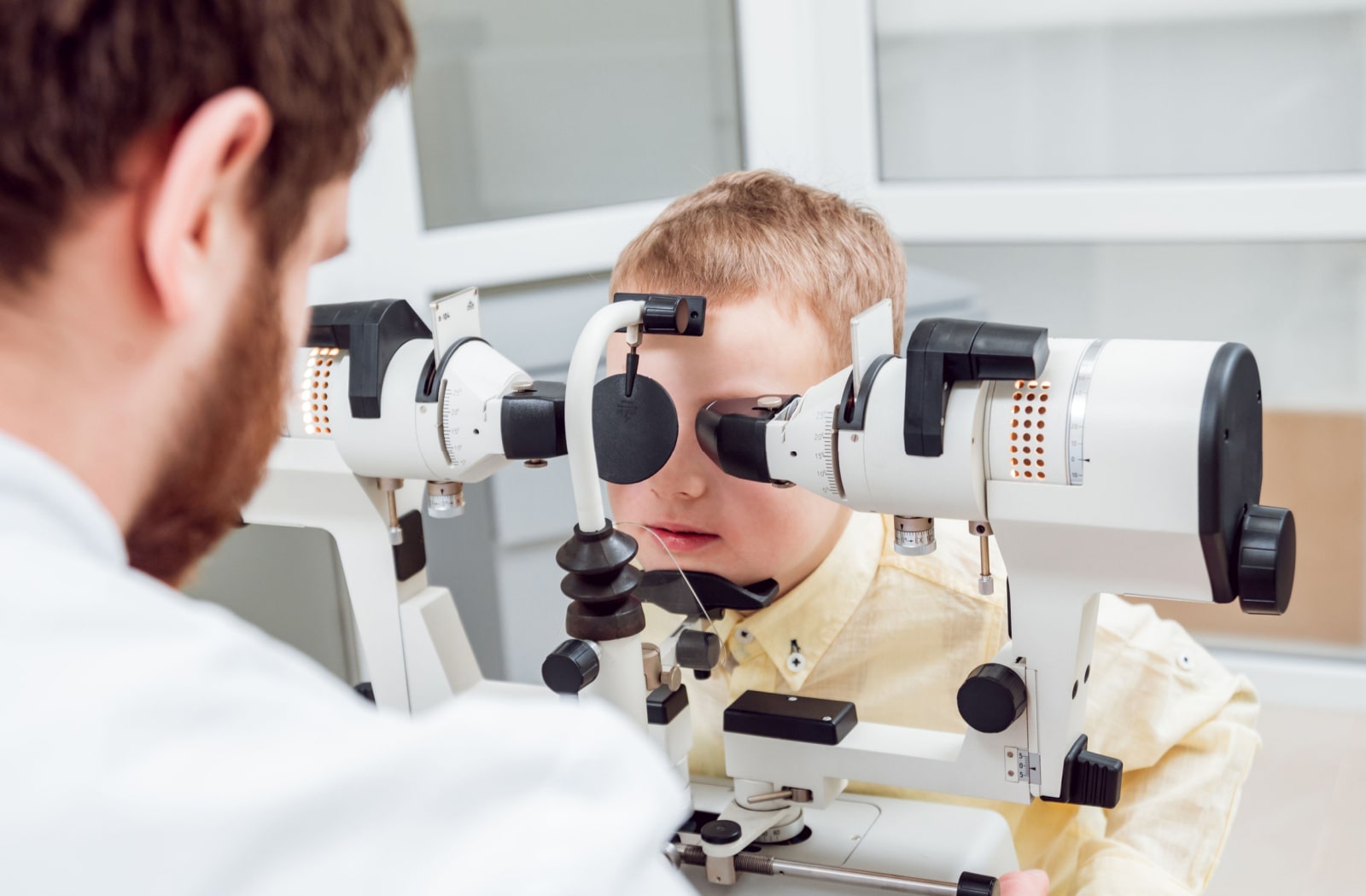As parents, you always want the best for your children. But, in those young years, things change fast. That includes their eyes. One of the best things you can do for your children’s health is to ensure they get an eye exam early. The Canadian Association of Optometrists suggests babies should get their first eye exam between 6–9 months old.
Eye exams are essential for detecting problems early on, such as strabismus, commonly known as crossed eyes. Babies can get crossed eyes when their eye muscles fail to work together properly. It’s a treatable condition, but a child won’t outgrow it alone.
Strabismus is a condition where the eyes don’t line up correctly, meaning one eye may look straight ahead while the other turns inward, outward, upward, or downward.
While this sounds like it might be easy to notice, this misalignment doesn’t have to happen all the time. It could occur intermittently, such as when your baby is trying to focus on something, and it can affect one or both eyes.
The exact cause of strabismus is not fully understood, though it concerns the six muscles that control your eye. There could be a problem with the eye muscles themselves, the nerves that control the muscles, or the part of the brain that tells your eyes what to do.
Factors that can increase the risk of your baby developing strabismus include:
While the most obvious symptom of strabismus is the misalignment of the eyes, infants who can’t communicate verbally can’t typically tell you their eyes aren’t straight. Even older children might have problems noticing their vision is wrong since they don’t have any other image to compare theirs to.
Symptoms you should look out for in babies and children include:
If you notice that your child’s eyes do not appear to be straight or if they complain of any of these symptoms, schedule an eye exam with your eye doctor.
Some babies may look like their eyes are misaligned, but this is due to extra skin around the eyes. This condition is called false strabismus, and the appearance will typically disappear as your baby’s face grows. However, since it can be hard to tell the difference between false and real strabismus at a glance, optometrists will use advanced tests to check their vision.
During a comprehensive eye exam, your optometrist will check your child’s vision, eye alignment, and eye movement. We may use various tools and techniques to assess the eyes’ ability to work together, such as the cover or prism tests. These tests involve covering one eye at a time or using special lenses to evaluate the eyes’ alignment and the brain’s ability to combine the images from each eye.

Leaving strabismus untreated can severely affect your child’s vision and development. In time, untreated strabismus can turn into amblyopia, also known as “lazy eye.”
Amblyopia occurs when the brain ignores the image from one eye. For children with strabismus, their brains can’t handle seeing two different things, so it only uses the straight eye. Over time, the connection between the brain and the affected eye weakens, potentially leading to blindness in one eye.
The good news is that doctors can treat amblyopia if they detect it early. Children’s brains are very adaptable, and vision experts can help them retrain their brains to use both eyes equally.
The optometrists at Vivid Eye Care can diagnose strabismus, but they may refer your child to vision therapy, depending on the severity.
During vision therapy sessions, your child will work with a therapist to perform activities designed to help the eyes work together more effectively. A child with poor vision may have trouble focusing in school or playing with friends, and vision therapy aims to correct that with non-surgical treatments.
The best part of vision therapy is therapists can tailor it to your child’s specific needs. Every child is unique, and therapists develop ongoing treatment plans that consider their strengths, weaknesses, and goals. Your child is engaged and motivated using games or other fun activities that train the eye-brain connection.
Surgery is also an option if your child’s strabismus isn’t responding to therapy or is too severe.
Good vision starts early. Crossed eyes can be corrected with excellent results, though the first step is always detection. It’s better to know for sure than risk your child’s sight, and optometrists have high-tech diagnostic equipment that can give you peace of mind.
If you suspect your baby has crossed eyes or any other vision problem, book an eye exam with our friendly team at Vivid Eye Care in Calgary.